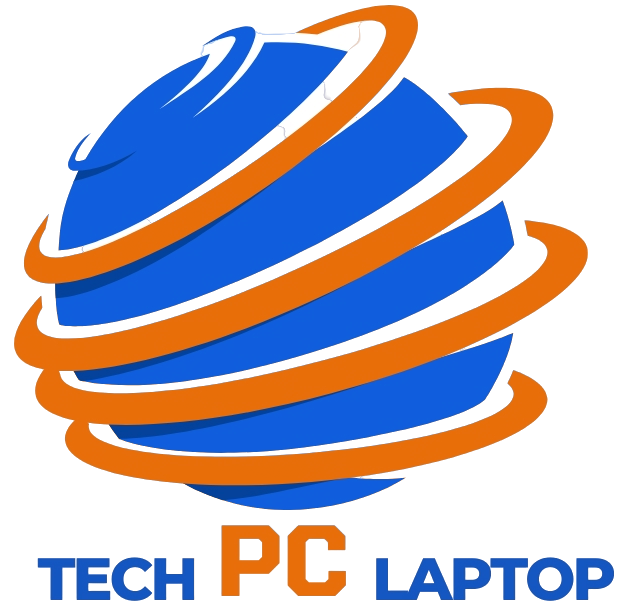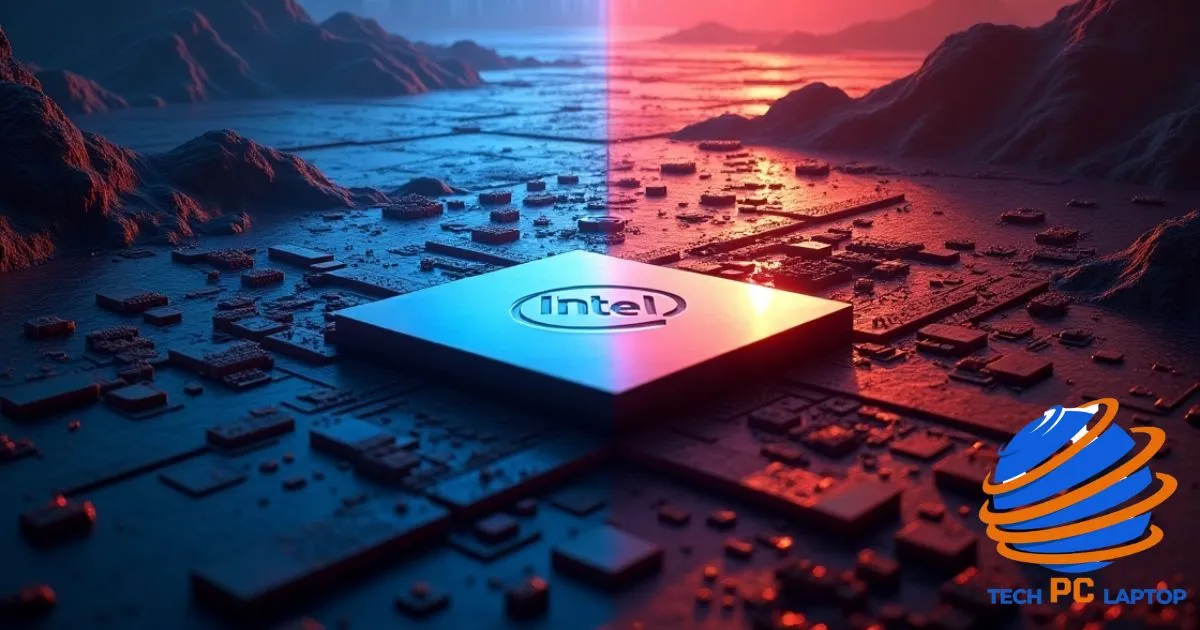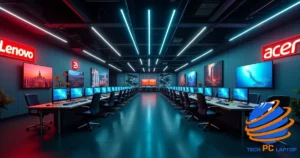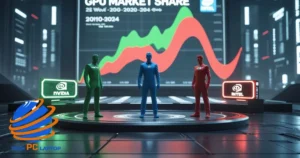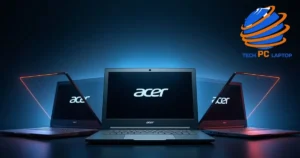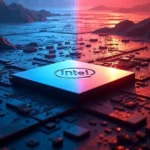The CPU market share battle between AMD and Intel has been one of tech’s most fascinating rivalries. Once David versus Goliath, this competition has transformed into a genuine duopoly with constantly shifting dynamics. This comprehensive analysis dives deep into historical data, current market positions, and projects future scenarios through 2030.
The CPU Duopoly: Understanding Market Dynamics

The processor market isn’t just about technical specifications; it’s driven by complex factors that shape how Intel CPUs and AMD CPUs compete for dominance.
Three key elements determine shifts in CPU market share:
- Manufacturing Capability: The ability to produce chips at scale using cutting-edge processes directly impacts both availability and performance.
- Technological Innovation: Breakthroughs in architecture, process nodes, and power efficiency can rapidly shift competitive positions.
- Pricing Strategy: How each company positions products across different market segments significantly influences overall market share trends.
As a senior analyst at TechInsight recently noted:
“The CPU duopoly between Intel and AMD represents one of the most complex competitive landscapes in technology. Unlike many other markets, the enormous capital requirements and technical expertise needed create significant barriers to entry, making this a battle primarily between two players.”
These dynamics create a fascinating market where leadership can shift dramatically when one company gains a significant technological or manufacturing advantage.
Historical Market Share Analysis (2012-2024)

The historical data of Intel vs AMD competition tells a story of dramatic reversals and strategic pivots. Let’s examine the comprehensive market share trends across key segments.
Desktop CPU Market Share (2012-2024)
| Year | Intel Market Share | AMD Market Share | Key Market Events |
| 2012 | 83.3% | 16.7% | AMD struggles with Bulldozer architecture |
| 2013 | 84.1% | 15.9% | Intel’s 4th-gen Core dominates |
| 2014 | 85.2% | 14.8% | AMD market position continues declining |
| 2015 | 87.0% | 13.0% | Intel’s 14nm process debuts |
| 2016 | 86.3% | 13.7% | AMD prepares Zen architecture |
| 2017 | 79.8% | 20.2% | Ryzen processors launch, reversing AMD decline |
| 2018 | 77.1% | 22.9% | Ryzen 2000 series builds momentum |
| 2019 | 72.4% | 27.6% | Ryzen 3000 series gains significant share |
| 2020 | 68.2% | 31.8% | Pandemic drives PC demand; AMD supply constraints |
| 2021 | 64.5% | 35.5% | Intel faces 10nm delays; chip shortages impact both |
| 2022 | 59.8% | 40.2% | AMD reaches highest desktop share in company history |
| 2023 | 58.1% | 41.9% | Intel’s 13th and 14th gen show improved performance |
| 2024 | 56.7% | 43.3% | AMD’s desktop share stabilizes as Intel counters |
The desktop segment clearly shows AMD’s remarkable resurgence driven by the Ryzen CPUs launch in 2017. The multi-threaded performance and value proposition of these processors reversed AMD’s declining fortunes.
Server/Data Center Segment Evolution
The server market transformation has been even more dramatic:
- 2012-2016: Intel held approximately 98-99% market share
- 2017: AMD EPYC launched with minimal initial impact (0.5% share)
- 2018: AMD reaches 2% server share
- 2019: AMD hits 4.5% server share as EPYC Rome launches
- 2020: AMD climbs to 7.1% server share
- 2021: AMD reaches 10.7% server share
- 2022: AMD hits 17.6% server share after Milan launch
- 2023: AMD achieves 23.9% server share
- 2024: AMD server share reaches 29.4%
This segment has seen AMD’s most substantial gains in terms of revenue impact, with each percentage point representing significant financial returns due to high margins in enterprise computing.
Mobile/Laptop Processor Competition
The laptop market has been Intel’s strongest stronghold:
- 2012-2017: Intel maintained roughly 85-90% share
- 2018-2020: AMD begins gaining ground with mobile Ryzen (reaches 15% share)
- 2021-2022: AMD’s mobile share peaks at 22% before falling back
- 2023-2024: Intel recaptures some share through Alder Lake and Meteor Lake efficiency gains
Business laptops remain Intel’s strongest segment, with AMD making most of its gains in consumer and gaming PCs.
Turning Points in the CPU Market War

Several pivotal moments have redefined the CPU competition landscape over the past decade.
AMD’s Ryzen Revolution (2017)
The launch of Ryzen processors in 2017 represented AMD’s most significant turning point. After years of struggling with the underperforming Bulldozer architecture, Ryzen delivered:
- Up to 52% improved instructions-per-clock over previous generation
- Multi-threaded performance that matched or exceeded Intel’s offerings
- Dramatically better price-to-performance ratio
- A scalable architecture from laptops storage to servers
As Dr. Lisa Su, AMD CEO, noted at CES 2017:
“The Zen architecture represents the most significant microarchitectural innovation from AMD in over a decade. We designed it from the ground up for efficiency, scalability, and performance.”
This technological breakthrough enabled AMD to compete effectively across all segments for the first time in years.
Intel’s 14nm Challenges and Delays
While AMD surged forward, Intel faced significant manufacturing challenges:
- 2015: Intel’s 14nm process debuts
- 2016-2019: Continued delays in 10nm production
- 2020: Further setbacks in manufacturing roadmap
- 2021-2022: Intel restructures and invests heavily in new foundry strategy
These delays meant Intel couldn’t deliver expected performance gains, allowing AMD to close the performance gap and eventually surpass Intel in some metrics.
How AMD’s EPYC Changed the Server Landscape
The server market traditionally represented Intel’s most profitable segment, with margins exceeding 60%. AMD’s EPYC processors disrupted this dominance by offering:
- More cores per socket
- Better performance-per-watt
- Lower total cost of ownership
- PCIe 4.0 (and later 5.0) adoption ahead of Intel
Major cloud providers like AWS, Google, and Microsoft began deploying EPYC processors at scale, fundamentally altering the economics of the server CPU market.
Current Market Reality (2024-25)

As of 2024, the CPU market share landscape has evolved into a competitive duopoly with distinct segment differences.
Detailed Segment Breakdown
High-Performance Desktop
- AMD market share: 52.3%
- Intel market share: 47.7%
AMD leads in this segment largely due to superior multi-threaded performance in creative workloads and high-end gaming. The price-to-performance ratio continues to favor AMD, particularly for users requiring many cores.
Budget/Mainstream Desktop
- AMD market share: 38.9%
- Intel market share: 61.1%
Intel maintains an advantage in budget segments, particularly with its non-K series processors and integrated graphics solutions that offer compelling value for basic computing needs.
Enterprise/Server
- AMD market share: 29.4%
- Intel market share: 70.6%
While still Intel-dominated, this segment has seen AMD’s most dramatic growth. Projections suggest AMD could reach 35% by year-end as more enterprise customers complete qualification cycles for EPYC processors.
Laptop/Mobile Computing
- AMD market share: 19.7%
- Intel market share: 80.3%
Intel maintains its strongest position in mobile computing, particularly in business laptops where its platform advantages, battery optimization, and corporate relationships create significant barriers to AMD adoption.
Gaming-Specific Market
- AMD market share: 44.5%
- Intel market share: 55.5%
Gaming represents a balanced battleground, with Intel’s single-threaded performance advantages offset by AMD’s multi-core value proposition in gaming PCs that are increasingly used for streaming and content creation.
Future Market Share Projection (2025-2030)
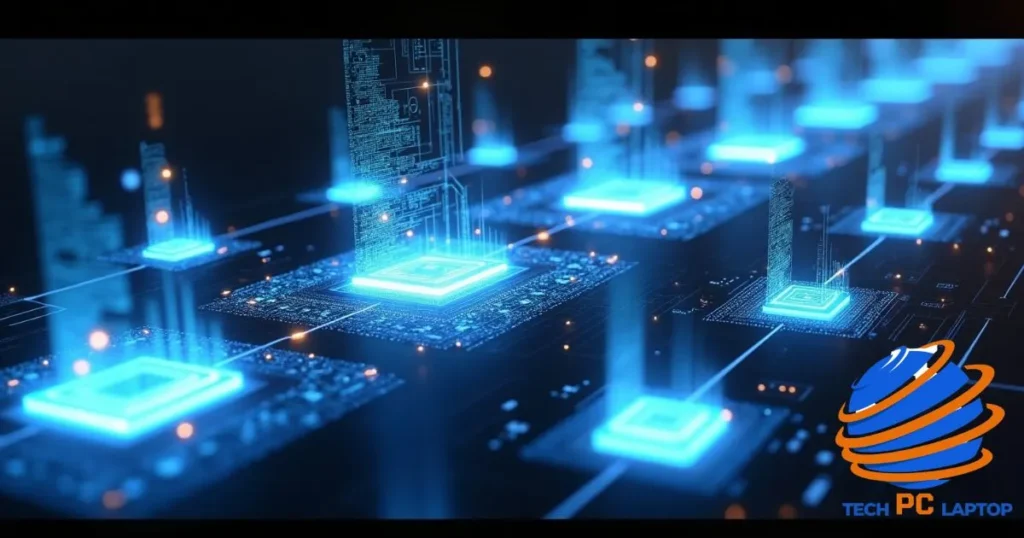
Using regression analysis and industry forecasts, we can project several scenarios for the coming years.
AI and Machine Learning Impact
The growing importance of AI and ML capabilities will reshape CPU designs:
- Both companies are integrating specialized AI accelerators into mainstream CPUs
- Intel’s acquisition of Habana Labs positions it well for certain workloads
- AMD’s MI300 accelerators demonstrate the company’s AI commitment
- By 2027, AI capabilities may become a primary differentiator in consumer CPUs
TSMC vs. Intel Foundry Capabilities
Manufacturing prowess remains critical:
- AMD’s partnership with TSMC provides access to leading-edge nodes
- Intel’s IDM 2.0 strategy aims to regain process leadership by 2025
- By 2026-2027, Intel plans to leapfrog competitors with angstrom-era nodes
The success or failure of Intel’s manufacturing renaissance will significantly impact market share trends through 2030.
Projected Market Share Scenarios (2025-2030)
Based on trend analysis and announced roadmaps, three primary scenarios emerge:
Baseline Projection
| Year | Desktop Computers | Server/Data Center | Mobile/Laptop | |||
| Intel | AMD | Intel | AMD | Intel | AMD | |
| 2025 | 55.3% | 44.7% | 67.1% | 32.9% | 79.1% | 20.9% |
| 2026 | 54.2% | 45.8% | 64.3% | 35.7% | 77.8% | 22.2% |
| 2027 | 53.6% | 46.4% | 62.5% | 37.5% | 76.2% | 23.8% |
| 2028 | 53.1% | 46.9% | 61.7% | 38.3% | 75.3% | 24.7% |
| 2029 | 52.8% | 47.2% | 61.2% | 38.8% | 74.8% | 25.2% |
| 2030 | 52.5% | 47.5% | 60.9% | 39.1% | 74.5% | 25.5% |
This scenario assumes both companies execute their roadmaps reasonably well, with competitive products but no dramatic technological breakthroughs.
Intel Renaissance Scenario
If Intel’s manufacturing revitalization succeeds completely:
- Desktop market: Intel could recapture up to 60% share by 2028
- Server market: Intel might halt AMD’s advances at 30-32% share
- Mobile market: Intel could strengthen position to over 85% share
AMD Acceleration Scenario
If AMD continues its execution advantage and TSMC maintains its lead:
- Desktop market: AMD could reach 55% share by 2028
- Server market: AMD might approach 45-48% share by 2030
- Mobile market: AMD could potentially reach 30% share
The actual outcome will likely fall somewhere between these scenarios, with different segments trending towards different projections.
Investing Implications
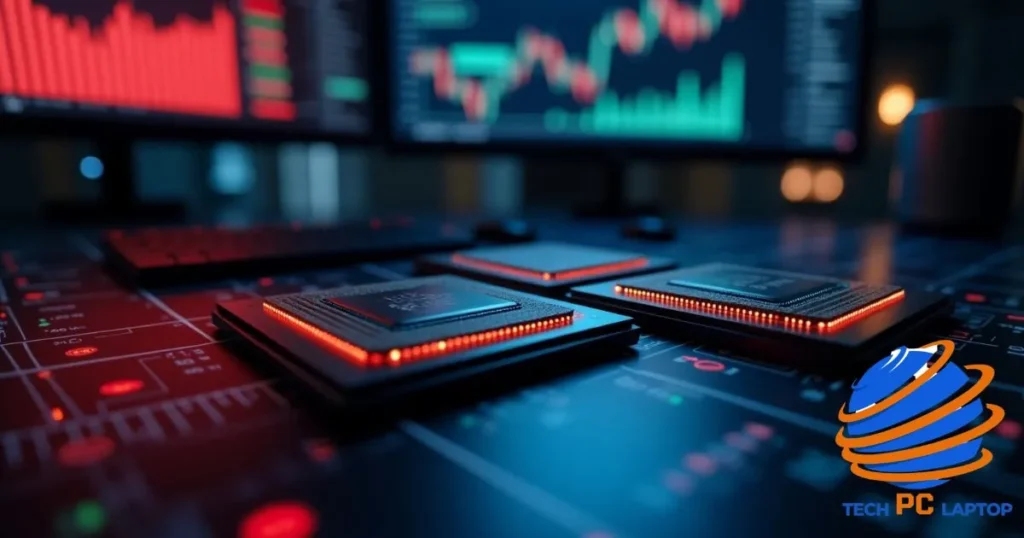
The shifting CPU market has significant investment implications for both companies and the broader semiconductor sector.
Historical Stock Performance Correlation
Market share changes have historically correlated strongly with stock performance:
- AMD stock price grew over 1500% between 2017-2022 as market share increased
- Intel stock underperformed the broader market by approximately 60% during the same period
However, this correlation isn’t perfect:
- Forward-looking investors tend to price in expected market share gains/losses 12-18 months in advance
- Margin improvements often matter more than pure share gains
- Overall market growth can mask share losses for the declining player
Leading Indicators for Future Market Shifts
Investors should monitor several key indicators:
- Manufacturing yield reports from TSMC and Intel
- OEM design wins in premium segments
- Enterprise qualification cycles for new server platforms
- ASP trends reflecting competitive positioning
- R&D spending as a percentage of revenue
These metrics often signal market share shifts before they appear in official statistics.
Consumer Buying Guide: Making Sense of Market Trends

For consumers, these market share trends have practical implications for purchasing decisions.
What Market Share Trends Mean for Your Next Purchase
Market share shifts generally reflect competitive products, but don’t tell the whole story:
- Intel processors remain stronger in single-threaded performance and certain specialized workloads
- AMD processors typically offer better multi-threaded performance and value in core-heavy applications
- Platform features (connectivity, memory support, power management) often matter more than raw CPU performance
Price Trends Analysis
Historical data shows interesting pricing patterns:
- As AMD gained share, Intel’s premium pricing has eroded
- Entry-level price points have decreased approximately 15% since 2020
- Mid-range segment has seen the most aggressive pricing competition
- High-end prices remain relatively stable but with more cores/features at each tier
Current Recommendations (February 2025)
Based on today’s market:
For Gaming PCs:
- Budget: Intel Core 14400F
- Mid-range: AMD Ryzen 7 8700X
- High-end: Intel Core i9-14900KS
For Productivity/Content Creation:
- Budget: AMD Ryzen 5 8600
- Mid-range: AMD Ryzen 9 8950X
- High-end: AMD Threadripper 7980X
For Business Laptops:
- Ultraportable: Intel Core Ultra 7 265H
- General business: Intel Core Ultra 5 255U
- Desktop replacement: AMD Ryzen 9 8945HX
These recommendations may shift as new products launch and market share trends evolve.
Expert Predictions and Analysis

Industry analysts have varying perspectives on the future CPU competition.
Dr. Ian Cutress, independent semiconductor analyst, notes:
“The x86 market will likely remain a duopoly through 2030, but we’re seeing increasing competitive pressure from ARM in both mobile and server segments. Both Intel and AMD must innovate not just against each other, but against a fundamentally different architecture paradigm.”
Linley Gwennap, principal analyst at The Linley Group, observes:
“Intel’s IDM 2.0 strategy represents their best chance to regain technological leadership, but execution remains the key question. AMD has demonstrated remarkable consistency in delivering on roadmaps, which has been the primary driver of their market share gains.”
These expert perspectives highlight the complexity of predicting market share trends in a rapidly evolving technological landscape.
Conclusion: Beyond the Duopoly
While this analysis has focused on the Intel vs AMD competition, the processor landscape could fundamentally change by 2030.
The ARM Challenge
ARM-based processors increasingly threaten x86 dominance:
- Apple’s transition to custom ARM chips has proven highly successful
- Qualcomm’s Snapdragon X Elite shows competitiveness in Windows machines
- Cloud providers are deploying custom ARM designs for specific workloads
- Both Intel and AMD face challenges in power efficiency compared to ARM
Specialized Computing’s Rise
The traditional CPU may become less central to computing performance:
- GPUs continue gaining importance for parallel workloads
- FPGAs offer flexibility for specialized tasks
- Custom AI accelerators handle machine learning more efficiently
- Quantum computing begins addressing certain specialized problems
